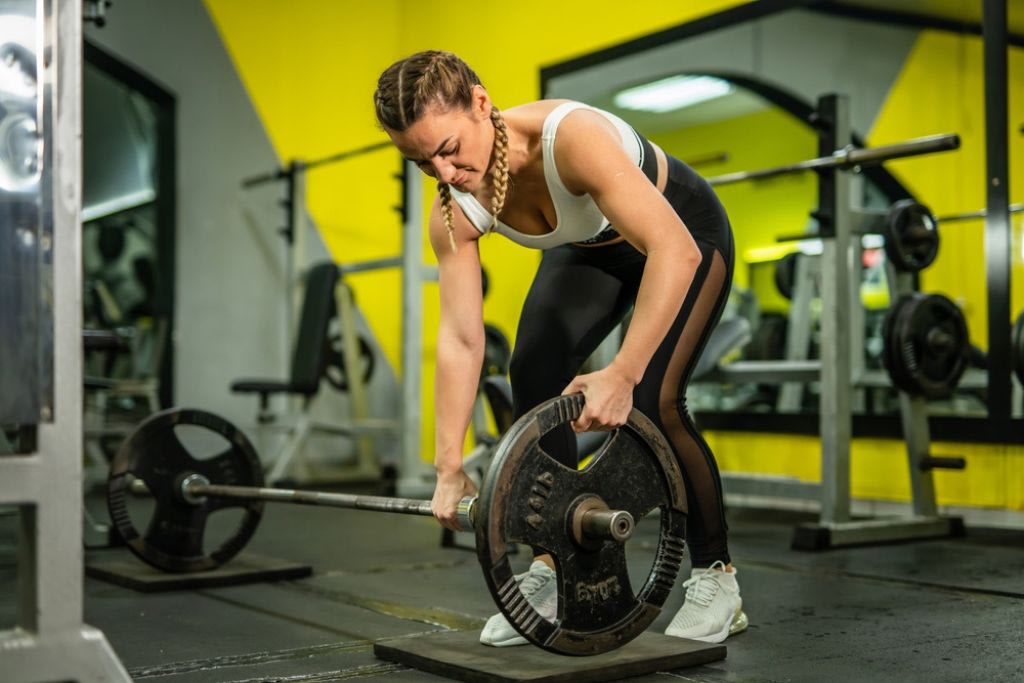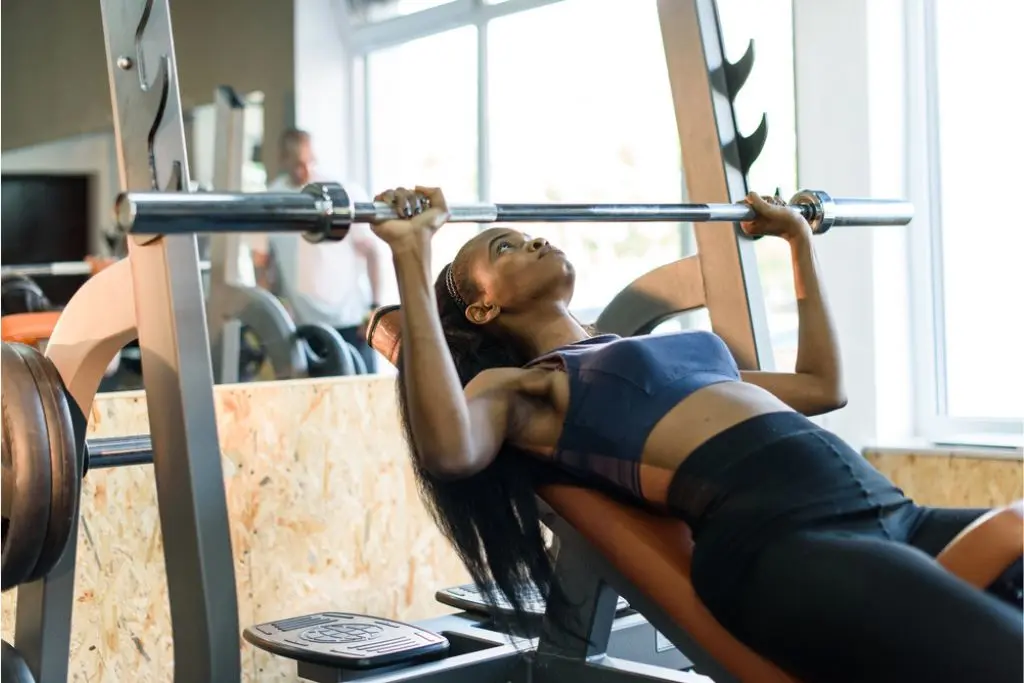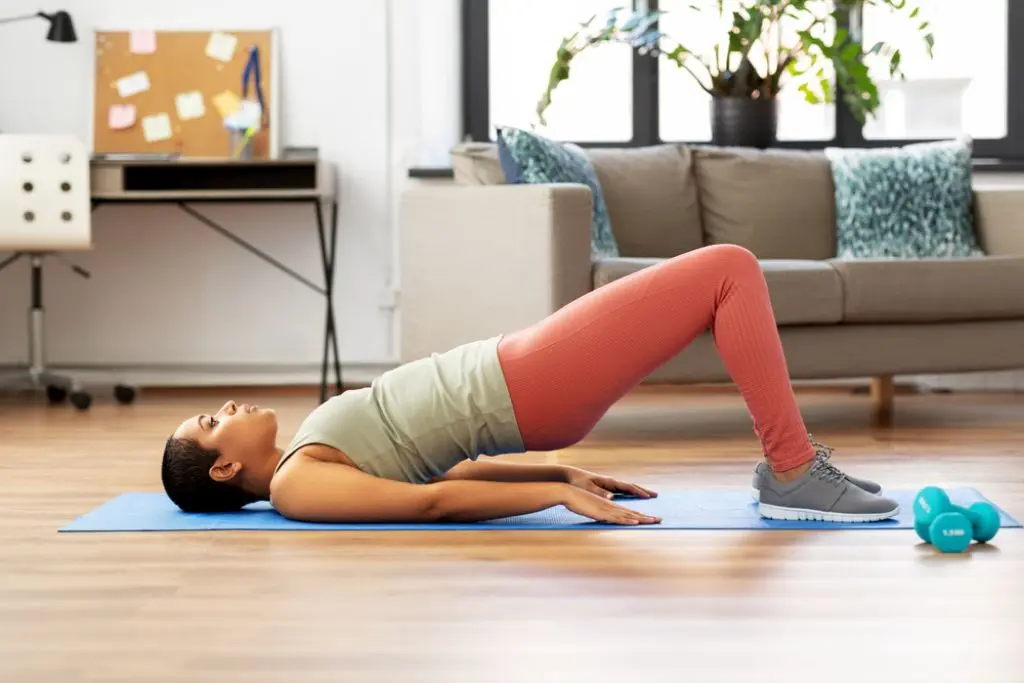Is Lifting Weights Bad For Your Pelvic Floor?

May 18, 2023

As good as strength training can be for your body and mind, there are still a few myths and misconceptions floating around that can get in the way of actually starting your weight lifting journey.
From worrying that lifting weights is going to make you “bulky” (it’s not), to thinking strength training is pointless if your goal is to lose weight (when strength training is an important part of improving body composition) or claims that lifting weights is downright dangerous, there are plenty of myths our trainers are used to dispelling.
But what about the effect of weight training on your pelvic floor? Can it be harmful? We dove into the research and expert advice to find out.
New to all things pelvic floor related? We recommend reading this article to get acquainted with what your pelvic floor is and what causes a weak pelvic floor.
The big question: Is lifting weights bad for your pelvic floor?
As you might have already guessed, the answer isn’t black and white when there are many variable factors at play and still so much we don’t know about the pelvic floor. Existing studies have also made it clear that more research is still needed in this area of women’s health.
But - spoiler alert - while heavy lifting can put extra pressure on your pelvic floor, it’s generally safe as long as you’re performing each movement correctly and listening to your body.
Here’s what you need to know to protect your pelvic floor while strength training.

Be smart when you start
First thing’s first - if you’re at high risk of a pelvic floor disorder (PFD) or are already experiencing signs of a weak pelvic floor, it’s always best to consult your healthcare provider before starting a new exercise program.
According to the National Institute of Health, what contributes to the development of pelvic floor problems is quite complex, but women who are at a higher risk include those who are recovering from childbirth, are menopausal, overweight, have chronic constipation or coughing problems, have had surgeries such as a hysterectomy, or those who have a family history of incontinence issues.
For women with a well-functioning pelvic floor, physical exercise and strength training can be beneficial, but caution needs to be taken if you start to notice signs of weakness. Signs your pelvic floor is tight or weak include accidentally leaking urine when you laugh, cough, sneeze or exercise, experiencing pain during sex, finding it difficult to fully empty your bladder or bowel, constantly needing to go to the toilet, accidentally passing wind, or accidentally losing control of your bladder or bowel.
If you tick any of these boxes and are wanting to start a new exercise program or already have (especially if it’s high in impact, intensity or involves weightlifting), it’s definitely a good idea to have a chat with your healthcare provider for advice.
Correct form is key
When lifting weights, your first priority should always be maintaining proper form during each exercise. If your form is incorrect, you not only increase your risk of injury and reduce the effectiveness of your workout, but you can also put extra strain on your pelvic area.
If you’re new to an exercise or aren’t confident enough to add weights just yet, there’s no pressure. Continue to perform the exercise with your bodyweight until you’re ready.
As you start to progress and begin to lift heavier weights, does that mean you’ve mastered the exercise and don’t need to think about form anymore? Nope. Maintaining proper form becomes even more important, given the extra strain the weights put your body under, so don’t be afraid to reduce your weights at any time if it’s not feeling right.
Remember, the Sweat app also has demonstrations and instructions for each exercise in your workout whenever you need a hand!

Breathe through each rep
A common strength training mistake is to take a deep breath and hold it in during your lifts, aka the Valsalva maneuver. While this may feel natural or helpful, the Continence Foundation of Australia says not to hold your breath during lifts as it can increase the pressure on your abdominal organs and pelvic floor muscles.
A 2013 research review has shown this breathing technique increases intra-abdominal pressure, and an incremental rise in pressure was observed as the lifting intensity and effort increased.
If you’re used to holding your breath, the correct breathing technique is to exhale on the lift or the exertion phase, and inhale on the lowering or relaxation phase. Learning how to breathe correctly can help reduce pelvic pressure and engage the correct muscles during your lifts.
Don’t push yourself too hard
When working out, you want to feel challenged without putting yourself at risk of an injury. This means gradually increasing your weights as your strength builds and reducing your weights if you feel overly strained or like you need to hold your breath to complete each rep.
It can also help to lift lighter weights on days when you’re feeling more tired, under the weather or experiencing post-workout muscle aches as these factors can mean your pelvic floor may not work as effectively.

Make adjustments if you need to
If you’re feeling a lot of pressure in your pelvic area during an exercise, swap it out! You can also ease the pressure during lower body exercises such as squats and lunges by reducing the depth of your movements, or reduce the intensity during core workouts if that’s when you feel discomfort. You also might choose to avoid high-impact or high-intensity training.
One in four US women report moderate to severe symptoms of urinary incontinence, fecal incontinence or pelvic organ prolapse according to a 2016 review, but it’s even more prevalent in women who participate in high-impact sports - a finding supported by earlier research from 2007. Exercises to avoid with a weak pelvic floor are high-impact or plyometric movements, running, and deep heavy lifts such as squats.
Researchers explain that while most physical activity does not harm the pelvic floor and is beneficial to a woman’s overall health, mild to moderate exercise options such as brisk walking, light weight training or Pilates can be good options for decreasing the odds of having or developing urinary incontinence. You might even want to use the On Demand section of the Sweat app to mix it up by including training styles like Pilates and yoga in your routine.
Include pelvic floor exercises in your routine
Whether you’re following a strength training program or not, one of the most important things you can do to strengthen your pelvic floor is to make pelvic floor strengthening exercises, aka Kegels, part of your daily routine.
Kegels are contract and release movements of your pelvic floor muscles, as if you were stopping the flow of urine. They’re easy to perform anywhere, anytime.
You wouldn’t neglect any other muscle group, so why ignore this one?
Listen to your body and don’t ignore the signs
If you experience any symptoms that suggest you may have a weak pelvic floor, either in daily life or during your workouts, don’t continue with your training routine just hoping it’ll improve - it’s time to book in to see your healthcare provider.
They will be able to provide you with the advice, tests and examinations, and guidance you need to develop a suitable exercise program if necessary.
Listening to your body is so important, as highlighted by one 2019 research review that set out to find whether exercise increases or decreases the risk of pelvic floor issues.
The good news is, their findings showed that women who exercise generally have similar or stronger pelvic floor strength than those who don’t, however intra-abdominal pressure associated with exercise and pelvic floor strength does vary between activities and between women.
This means that for each woman, the threshold for when a workout has positive or negative effects is different. This makes sense as our bodies are all unique, after all, but means that listening to your body is fundamental. What works best for your gym buddy might not work for you.
Despite the strain lifting weights can put your body under, strength training is not inherently dangerous for women, nor does it significantly increase your risk of developing a weak pelvic floor.
To protect your body, see your healthcare provider before starting a new exercise program or if you experience signs of a weak pelvic floor during your workouts, focus on moving with correct form, know your limits, adapt your workout to suit you, and always listen to your body.

A more empowered you starts with Sweat, and our editorial team is here to bring you the latest fitness tips, trainer recommendations, wellbeing news, nutritional advice, nourishing recipes and free workouts.
* Disclaimer: This blog post is not intended to replace the advice of a medical professional. The above information should not be used to diagnose, treat, or prevent any disease or medical condition. Please consult your doctor before making any changes to your diet, sleep methods, daily activity, or fitness routine. Sweat assumes no responsibility for any personal injury or damage sustained by any recommendations, opinions, or advice given in this article.
Wellbeing